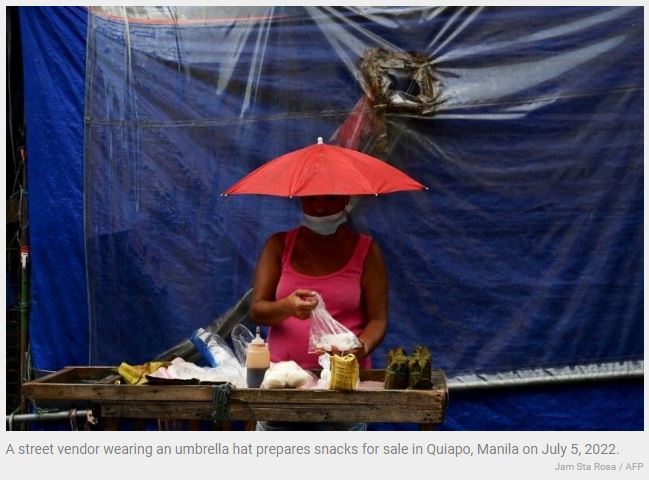Philippines bucks Asia downgrades with better growth outlook from ADB
MANILA, Philippines — The Asian Development Bank upwardly revised its growth forecast for the Philippines, joining a small number of Asian economies that received a better economic outlook as rising interest rates and consumer prices threaten the region’s recovery from a more persistent pandemic.
In a supplement to its flagship “Asian Development Outlook” report released Thursday, the Manila-based lender raised its growth projection for its host country to 6.5% this year, better than the old projection of 6% expansion penciled in last April.
If realized, the ADB’s revised projection would match the lower-limit of the Marcos administration’s watered-down goal of 6.5-7.5% growth for this year. Explaining its move, ADB said the additional easing of pandemic curbs and an expansion of the government’s vaccination program are helping recharge consumer spending and investment in the consumption-driven economy.
In Developing Asia, which is expected to grow slower than initially projected this year, only the Philippines and Indonesia received better growth forecasts from ADB. “The Philippine economy’s growth momentum has accelerated close to its ideal growth path,” ADB Philippines Country Director Kelly Bird said.
“Strong domestic demand supported by a pick-up in employment and remittance inflows, private investment expansion, and large public infrastructure projects will underpin the country’s recovery from the economic impact of the pandemic,” he added.
ADB highlighted in its report that mobility in workspaces and recreation rebounded to pre-pandemic levels, which contributed to the recovery in consumer spending. However, the Philippines is now battling a renewed increase in cases, partly due to this increased mobility of the public, but also because of waning vaccine immunity amid a low boosting rate and the presence of fast-spreading coronavirus variants.
Despite experiencing a small wave of transmission, much of the country still remains under Alert Level 1, the most relaxed restriction there is. At the same time, President Ferdinand Marcos Jr. earlier this month announced his plan to fully resume face-to-face school classes before the year ends, although blended learning would stay in “very specific areas” that aren’t ready yet for physical classes.
But ADB said there are risks to the country’s growth. For one, the Philippines is dealing with rising consumer prices, a depreciating peso and tightening monetary policy that could impact its economic recovery in the months to come. The multilateral lender expects Philippine inflation to average 4.9% this year, worse than its previous forecast of 4.2% and breaching the state’s 2-4% annual target.
The government would likely miss its inflation target again next year, ADB said, with price growth seen easing to 4.3% in 2023, albeit higher than the initial forecast of 3.5%.
That said, ADB predicts that economic growth would slow to 6.3% next year as “financial tightening and a broader pass-through of price pressures weigh on demand.”
“There are significant downside risks to growth in the second half from a slowdown in the major advanced economies and the possibility of elevated commodity prices being sustained due to the war in Ukraine,” the Bank said.
Source: https://www.philstar.com/business/2022/07/21/2196966/philippines-bucks-asia-downgrades-better-growth-outlook-adb


 Thailand
Thailand




